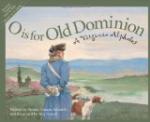It made good reading. It made altogether too good reading. We did not see that then. We did not know that most of the literature of houseboating is the work of people with plenty of imagination and no houseboats.
We resolved to build a houseboat. There was excitement in the mere decision; there was more when our friends came to hear of it. Their marked disapproval made our new departure seem almost indecorous. It was too late; the tide had us; and disapproval only gave zest to the project.
As a first step, we proceeded to rechristen ourselves from a nautical standpoint. The little mother was so hopelessly what the boatmen call a fair-weather sailor that her weakness named her, and she became Lady Fairweather. The daughter-wife, after immuring herself for half a day with nautical dictionaries and chocolate creams, could not tell whether she was Rudderina or Maratima; she finally concluded that she was Nautica. It required neither time nor confectionery to enable these two members of the family to rename the third. They viewed the strut of plain Mr. So-and-So at the prospect of commanding a vessel, and promptly dubbed him Commodore.
An earnest quest was next made for anybody and everybody who had ever used, seen, or heard of a houseboat; and the Commodore made journeys to various waters where specimens of this queer craft were to be found. All the time, three lead pencils were kept busy, and plans and specifications became as autumn leaves. We soon learned that there was little room for the artistic. Once Nautica had a charming creation, all verandas and overhanging roofs and things; but an old waterman came along and talked about wind and waves, and most of the overhanging art on that little houseboat disappeared under the eraser.
“That’s all good enough for one of those things you just tie to a bank and hang Chinese lanterns on,” he said. “But it would never do for a boat that’s going to get out in wide water and take what’s coming to it.”
When we concluded that we had the plans to our satisfaction (or rather that we never should have, which amounted to the same thing), we turned over to a builder the task of making them into something that would float and hold people and go. The resulting craft, after passing through a wrecking and some rebuilding, we called Gadabout. She was about fifty feet long and twelve feet wide over all, as the watermen say; and was propelled by twin screws, driven by two small gasoline engines. Though not a thing of beauty, yet, as she swung lazily at her moorings with her wide, low windows and the little hooded cockpit that we tried hard not to call a porch, she looked cozy and comfortable. Her colouring was colonial yellow and white, with a contrast of dark olive on the side runways and the decks.
Inside, Gadabout was arranged as house-like and, we thought, as homelike as boating requirements would permit. There were two cabins, one at either end of the craft. Between these, and at one side of the passageway connecting them, was what we always thought of as the kitchen, but always took care to speak of as the galley.




